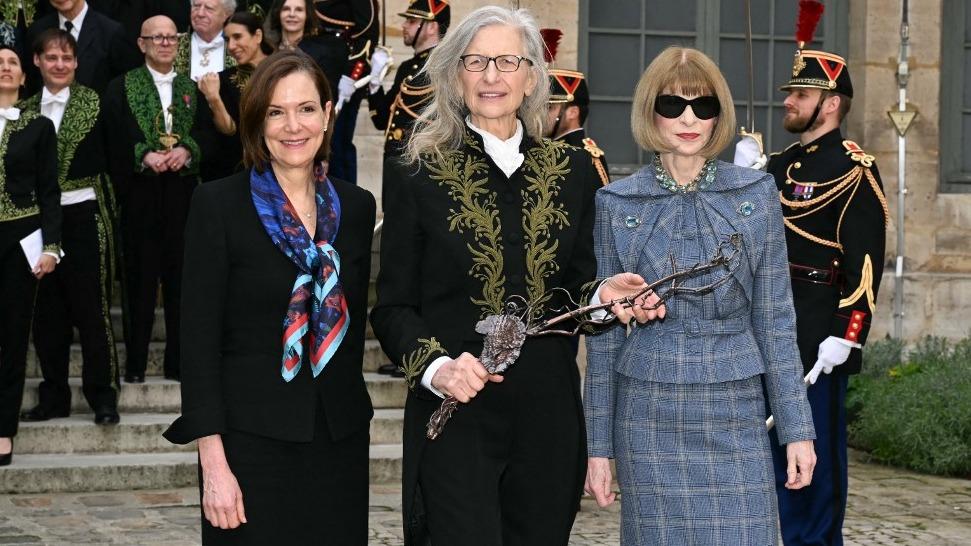American astronomer Annie Jump Cannon (1863 - 1941), of Harvard University, at the time of receiving her Master of Science degree from Oxford University. Hulton Archive (Getty Images)
Our topic today seems to be taken directly from an episode of
Star Wars
, but it really happened that several American astronomers, among which we highlight Annie Jump Cannon, were true Jedi who brought order to the Galaxy (ours, with a capital for astrophysicists), putting an end not to a star war, but yes to the chaos that existed in the way of classifying them.
The taxonomy of objects in science is essential to understand them and, in this aspect, astrophysics is not very different from zoology, where Thomas Henry Huxley already said that "a classification facilitates the operations of the mind aimed at conceiving and retaining in memory the characteristics of the classified objects”.
Annie Jump Cannon put order to the way of classifying the stars of the Milky Way and the entire universe,
Looking at stars must have been the first astronomical activity of the human being, there is nothing easier (or there was not, now the light pollution of cities often prevents us from this ancestral activity).
Not a few people, professionals or not, consider looking at the sky a fascinating hobby.
The ordering of stars must have begun millennia ago, in fact there are classifications that we still use today.
It is attributed to Hipparchus of Nicaea, considered the most erudite of the ancient astronomers, what could have been the first classification of stars based on what most clearly distinguishes them in the sky with the naked eye, their apparent brightness.
Unfortunately for us today, he assigned the brightest stars a 1 on his brightness scale, and the faintest a 6.
Thus, he created the system of star magnitudes that establishes that the brightest stars have a smaller magnitude.
Therefore, the scale of magnitudes goes the other way than the brightness, how many headaches has this invention of Hipparchus caused! It is still used today, although with a more physical-mathematical basis established by Norman Robert Pogson 20 centuries later!
There is another way to classify stars with the naked eye, although it requires much more attention and a more trained eye.
It consists of paying attention to color, because not all stars are yellow or white as we paint them at school, not even the Sun is yellow!
Betelgeuse, one of the brightest stars (magnitude 1 for Hipparchus) of the famous constellation of Orion, located on its shoulder as its name from Arabic says, is one of the stars whose color is most easily perceived, red in this case.
Sirius is another example, in this case of a blue star.
Unfortunately, these stars are no longer visible at night since last week, they hide below the horizon, their sunset is called, more or less when the Sun sets or, what is the same, they are above the horizon only for day,
remaining invisible by the daytime glow of the sky.
The sunset of Sirius at the same time as the Sun is something that the Romans celebrated at this time with incense and wine, I hope you enjoyed it (they also sacrificed a dog, but we do not recommend that).
As an alternative, you can look at another famous red-looking star, Antares, now visible at dawn.
Antares is the rival of Ares, or Mars for the Romans, it must have taken its name because it is a red star that competes with the also visible red planet, now observable just before sunrise.
you can see another famous red looking star, Antares, now visible at dawn.
Antares is the rival of Ares, or Mars for the Romans, it must have taken its name because it is a red star that competes with the also visible red planet, now observable just before sunrise.
you can see another famous red looking star, Antares, now visible at dawn.
Antares is the rival of Ares, or Mars for the Romans, it must have taken its name because it is a red star that competes with the also visible red planet, now observable just before sunrise.
Classifying stars by eye cannot go much further than using their apparent brightness and color.
To really access the physical properties of a star, such as its temperature or the value of its surface gravity, it is necessary to take spectra.
What is a spectrum?
Imagine looking out the window at a plant from the nearby park, an Arizona one, for example.
At first glance they would say that it is green.
But if you look closely, with binoculars, for example (because approaching a star, which is where our analogy is going, is not possible; yet), you will be able to distinguish that there are several types of green, one darker, one lighter, another even whitish, and there are also areas with different shades of brown.
That is a broad spectrum, distinguishing different shades of color, where each one is equivalent to a photon of different energy or, it is said, different frequency.
In the arizonica, with that coarse spectrum we can distinguish how many young leaves there are, those of a lighter green, if it is drying and has many brown leaves,
In the stars you can do the same, and this is where our Jedi Master Annie Jump Cannon comes into play.
In the late 19th century, Henry Draper first used a photographic plate to record the spectrum of a star.
Using his technique, funded by Mary Anna Palmar Draper, Henry's widow, and with an enhancement that allowed spectra to be taken of tens if not hundreds of stars in the same area of the sky simultaneously, Edward C. Pickering collected spectra for some 220,000 stars. adding about 120 tons of photographic plates.
From the origins of this megaproject at Harvard University, Pickering hired women like Williamina Paton Stevens, Florence Cushman, Henrietta Swan Leavitt and Annie Jump Cannon to analyze each of the spectra seen on the plates by eye and classify them.
Paton Stevens began by using a classification scheme invented 100 years earlier by Angelo Secchi, which used color (red, blue, yellow, orange) and the presence of dark areas in the spectra, known as absorption lines, which give information of the presence of chemical elements in the atmospheres of stars.
The effect is similar to that of plastic in Arizona, a darkening in certain areas of the spectrum.
For each of the four Secchi types, and a few extra, he created subtypes identified by capital letters A through Q.
Antonia Caetana de Paiva Pereira Maury, who with such a name could only be related to a doctor in the service of Spanish and Portuguese royalty (and with the Drapers), for her part, made a classification in Roman numerals from I to XXII .
And finally the Jedi Master appears, Annie Jump Cannon, who they say went from classifying 1,000 stars in three years to 200 spectra an hour, one every three seconds, to become, according to Pickering, "the only person in the world, male or female , who can do this job so quickly.”
She went on to classify some 350,000 spectra on her own.
And it's not easy, what she saw was this.
Jump Cannon eliminated spurious and unnecessary types and finally left the entire classification in a list of seven letters, OBAFGKM, with which we still classify all stellar objects today.
This is the case of the Sun, a G-type star. Later it would be discovered that it was a classification that perfectly accounted for the temperature of the atmospheres of the stars, here is one of the first differentiations between astronomy and astrophysics.
Although Annie Jump Cannon won multiple awards during the first half of the 20th century, and a prize was even created in her name in 1934 to honor new astronomy doctors, the truth is that her classification system is known today as the Harvard system.
This is not the case of other similar contributions such as the Hertzsprung-Russel diagram, or the Morgan-Keenan classification, which are identified by the names of their creators.
Annie Jump Cannon brought order to star rankings, let the entire Galaxy know!
Pablo G. Pérez González
is a researcher at the Center for Astrobiology, dependent on the Higher Council for Scientific Research and the National Institute for Aerospace Technology (CAB/CSIC-INTA).
Cosmic Void
is a section in which our knowledge about the universe is presented in a qualitative and quantitative way.
It is intended to explain the importance of understanding the cosmos not only from a scientific point of view but also from a philosophical, social and economic point of view.
The name "cosmic vacuum" refers to the fact that the universe is and is, for the most part, empty, with less than one atom per cubic meter, despite the fact that in our environment, paradoxically, there are quintillion atoms per meter cubic, which invites us to reflect on our existence and the presence of life in the universe.
The section is made up of
Pablo G. Pérez González
, researcher at the Center for Astrobiology;
Patricia Sanchez Blazquez
, full professor at the Complutense University of Madrid (UCM);
and
Eva Villaver
, researcher at the Center for Astrobiology.
You can follow
MATERIA
on
,
and
, or sign up here to receive
our weekly newsletter
.
Exclusive content for subscribers
read without limits
subscribe
I'm already a subscriber

/cloudfront-eu-central-1.images.arcpublishing.com/prisa/CJ6QCEZR6BA67OQMSFCPIFIXYA.jpg)









/cloudfront-eu-central-1.images.arcpublishing.com/prisa/KMEYMJKESBAZBE4MRBAM4TGHIQ.jpg)



